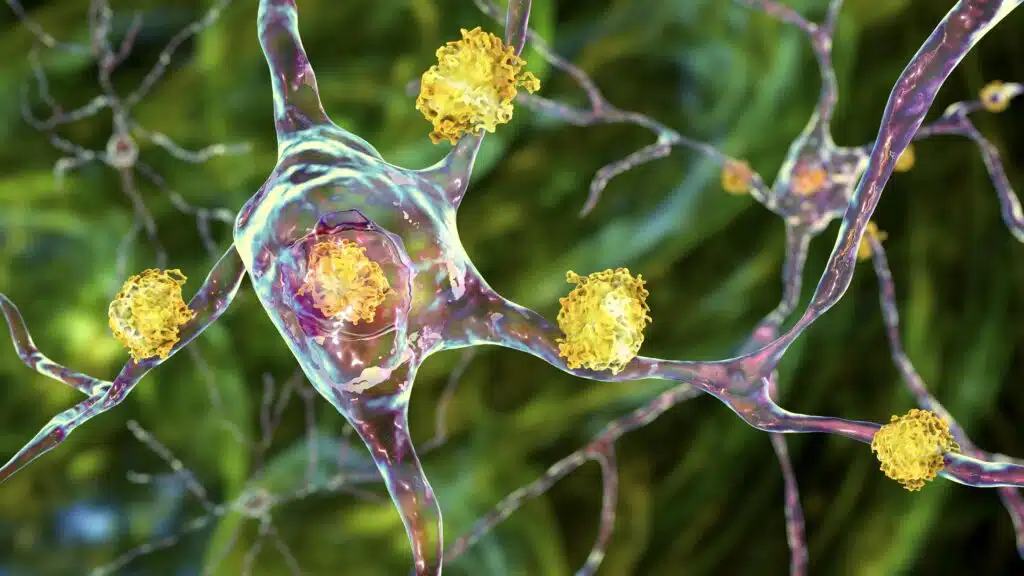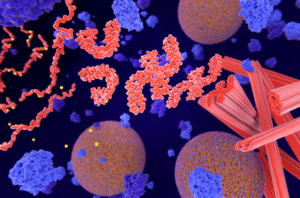A groundbreaking study conducted by researchers from the University of Ottawa is shedding new light on Huntington’s disease. The research focused on VGLUT3, a transporter protein, and its role in modulating the development of Huntington’s disease in a mouse model. The team’s initial findings could ultimately enhance our understanding of this devastating neurological disorder in humans and, with more research, could help identify new drug targets and treatment strategies for people with Huntington’s disease.

The Link Between VGLUT3 and Huntington’s Disease
Huntington’s disease is a rare, fatal genetic disorder caused by a mutated form of the huntingtin gene. The accumulation of the mutated huntingtin protein triggers the widespread nerve death in the brain — particularly in the striatum and cortex — that characterizes Huntington’s disease.
This progressive neuronal death leads to motor dysfunctions, uncontrollable movements, and abnormal body postures commonly associated with Huntington’s disease, as well as to psychiatric or cognitive impairments, changes in mood or behavior, and metabolic abnormalities.
Glutamate, the most abundant excitatory neurotransmitter in the brain, plays a critical role in most brain processes, including learning and memory. However, while glutamate is necessary to facilitate normal brain functioning, high levels of glutamate in certain parts of the brain have been associated with conditions like Alzheimer’s disease, Parkinson’s disease, and Huntington’s disease. The pathophysiology of Huntington’s disease, specifically, is linked to glutamatergic neurotransmission.
The vesicular glutamate transporter-3 (VGLUT3) is the transporter protein that packages glutamate into vesicles to release it into neurons. This transporter protein was the focus of a new study published in The Journal of Neuroscience, which uncovered the surprising role that VGLUT3 may play in Huntington’s disease.
New Research Findings
A recent study by Dr. Stephen Ferguson and a team of researchers from the University of Ottawa centered on observations crossing zQ175 knock-in mice of Huntington’s disease with a VGLUT3-null mouse model.
The team’s findings were, as Dr. Ferguson put it, “remarkable.”
“We saw a complete reversal of Huntington’s disease progression in mutant huntingtin mice lacking VGLUT3,” Dr. Ferguson summarized. “From 6 to 15 months of age, the knockout mice behaviorally were indistinguishable from wild type mice, whereas the Huntington’s mice continued to be more and more impaired over time on the various motor, behavior, and cognitive tasks that we tested on.”
In short, the team found that in both male and female zQ175 mice of Huntington’s disease, VGLUT3 deletion halted motor decline, rescued motor coordination, prevented short-term memory loss, and improved neuronal survival. The team also found that VGLUT3 deletion reduced the number of nuclear mutant huntingtin (mHTT) aggregates without altering total aggregate levels or microgliosis.
Anxiety behaviors were the only symptom that VGLUT3 deletion did not improve. But, as the team notes, this is in line with what we understand about the transporter protein’s role in regulating certain conditions, including eating disorders, drug addiction, depression, and anxiety.
Conclusions
Overall, the team’s findings provide evidence that VGLUT3 signaling plays an essential role in the progression and pathophysiology of Huntington’s disease in mouse models — and, importantly, that by deleting VGLUT3, it is possible to prevent short-term memory loss, motor decline, and neuronal loss in zQ175 mice.
A review of the study noted that these results should be “of overall wide interest to researchers in HD as well as to those studying the role of VGLUT3 in cognition and motor control.”
Dr. Ferguson and his lab are currently working on methods to pharmacologically suppress the VGLUT3 protein and ways to alter glutamate release in specific neurons. While more research is needed, their findings highlight VGLUT3 as a potentially important therapeutic target for treating Huntington’s disease in humans.
Scantox is a part of Scantox, a GLP/GCP-compliant contract research organization (CRO) delivering the highest grade of Discovery, Regulatory Toxicology and CMC/Analytical services since 1977. Scantox focuses on preclinical studies related to central nervous system (CNS) diseases, rare diseases, and mental disorders. With highly predictive disease models available on site and unparalleled preclinical experience, Scantox can handle most CNS drug development needs for biopharmaceutical companies of all sizes. For more information about Scantox, visit www.scantox.com.








